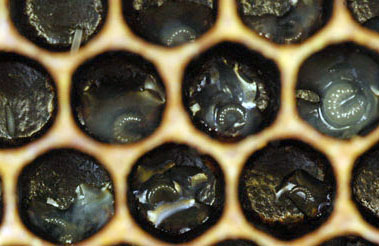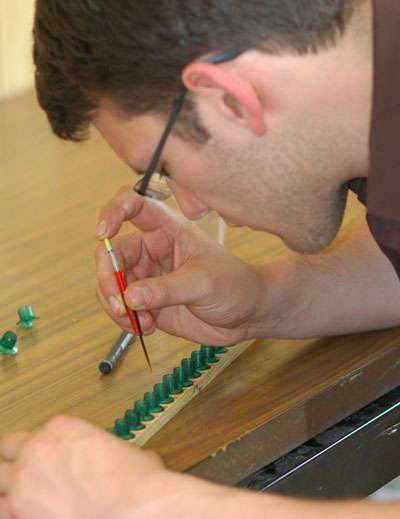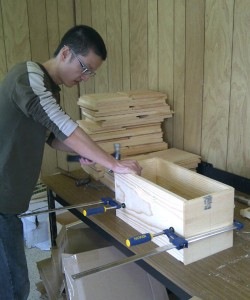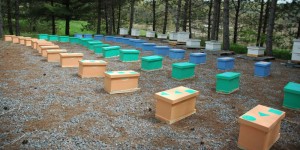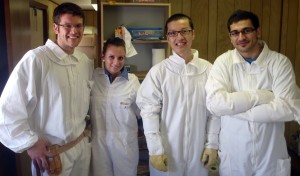“Good afternoon your majesty! May i say that you look especially fecund today!”
There are thousands of workers and hundreds of drones in a honey bee colony, but only one queen. She has massive ovaries and a long abdomen to deposit eggs into the hexagonal cells that workers build out of wax. You can’t tell from the picture below, but queen number 3 (The Queen Mom) is very special …
First, a quick lesson on haplo-diploidy. Humans, and most other animals, are diploid – both males and females have two sets of each chromosome inherited from mom and dad. Bees, on the other hand, are haplo-diploid … females are diploid with two sets of each chromosome inherited from mom and dad, but males (=drones) are haploid – they only have one copy of each chromosome that they get from their mom. How does this happen? A queen will fertilize her eggs with sperm to produce diploid daughters, but will lay unfertilized eggs to produce haploid sons. So, a female bee (queen or worker) has a mom and a dad, but male bees only have a mom (but they still have a granddad from their mom’s side 🙂 )
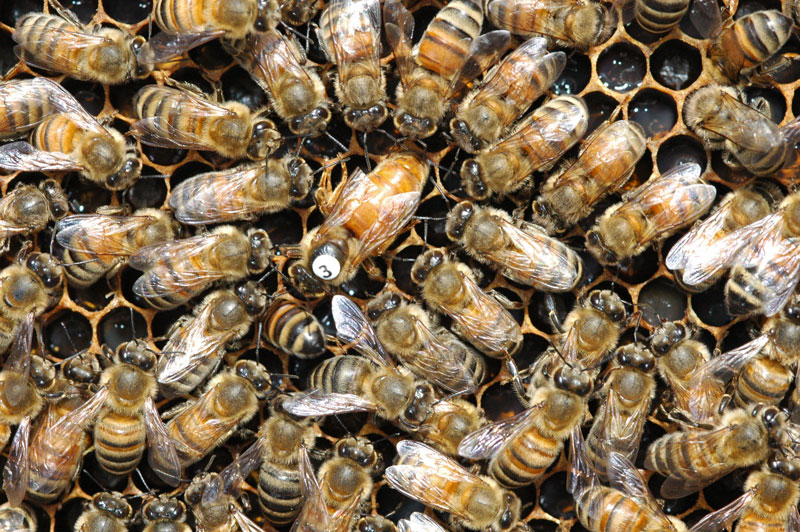
Queen (3) surrounded by her retinue of workers
Second, a quick lesson on bee sex [put on some barry white while you read this next paragraph]. Normally, a virgin queen will go on a nuptial flight where she mates with 15 to 20 drones on the wing!!! She stores sperm from all of her mates. When she starts fertilizing her eggs to make workers/daughter queens, something interesting happens: if two eggs get fertilized with sperm from different males, then the daughters will be ‘half sisters’ – they have the same mom, but different dads. Alternatively, two eggs can get fertilized with sperm from the same male, which will give us ‘full sister’ that have the same mom and dad. So, how related are full sisters and half sisters ? In humans, full siblings are 50% related and half siblings are 25% related. But because drones are haploid, they only have one copy of each chromosome that they pass to all of their daughters. So, full sister bees share 100% of the genetic material they inherit from their dad and 50% of the genetic material they inherit from their mom – they are 75% related. We call full sister bees “Super Sisters”, because they are super related! This unusual genetic system makes for some very interesting consequences… for one, full sisters are more closely related to each other then to their own daughters… Neat!
The other great thing about super-sisters is that they make studying genetics a lot easier. Because super sisters are very related (close to being clones of each other), they are used as a tool by researchers to virtually eliminate genetic variation from the mom’s side. So, by mating many super-sister queens to different drones, we can see how different genetic mutations carried by drones can affect colony traits without having to worry about genetic variation in the queens.
Here is where the Queen Mom comes in!… We got the queen mom while she was still a virgin. Then we artificially inseminated her with sperm from a single drone! So, all of the Queen Mom’s daughters will be super sisters. It took us more than a month to make the Queen Mom… now we are ready for the experiment !
